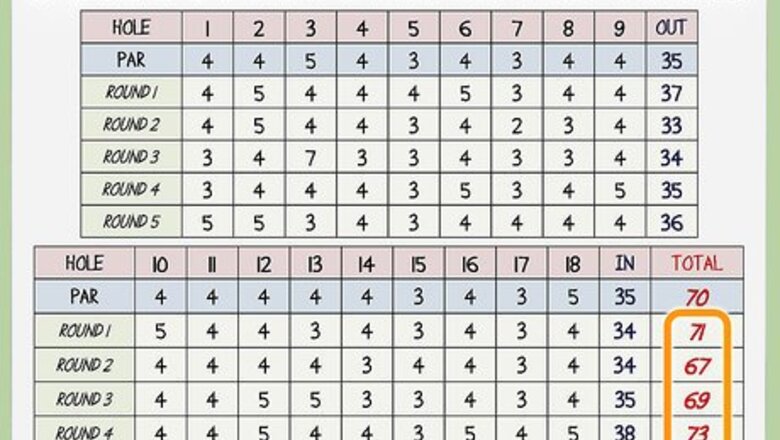
views
Calculating Your Handicap Index
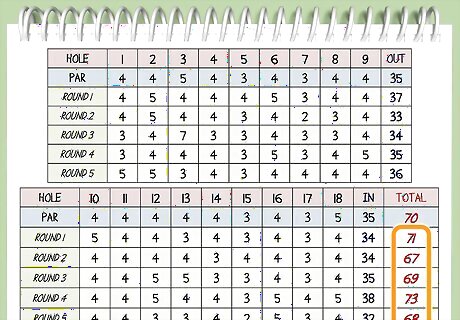
Find your adjusted gross score. To calculate your Handicap Index, you’ll first need a minimum of five golf scores (and no more than 20). Gather at least five scores 18-hole scores or ten 9-hole scores and use them to calculate your Adjusted Gross Score. To determine your Adjusted Gross Score (AGS), total up the number of strokes taken during a round, then adjust for the maximum per-hole scores (determined by the USGA’s Equitable Stroke Control guidelines). Most golf courses make the information on maximum per-hole scores available to the general public. Check the course’s website or inquire at the clubhouse. For example, if you took 8 strokes on a hole whose maximum-per hole score is 5, you would count 5 strokes (not 8) for that hole when adding up your total number of strokes for the game.
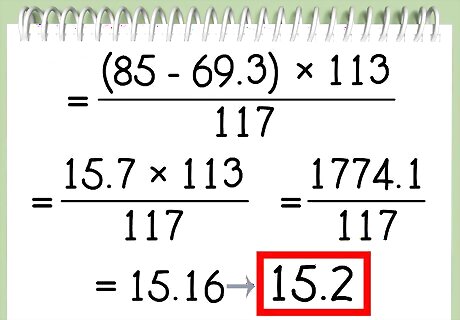
Calculate your Handicap Differential. Once you have your AGS, use it to determine your handicap differential. The equation for a Handicap Differential is the AGS minus Course rating, multiplied by 113, and divided by the Slope Rating, or (AGS - Course Rating) x 113 / Slope Rating. The Course Rating is the numerical value given by the UGSA to each set of tees on a course. It approximates the number of strokes it should take a scratch golfer to complete the course. Most courses make this information available via the course website or at the clubhouse. The Slope Rating shows the difficulty of a course for an average golfer and is calculated by comparing the Course Rating to the scores of bogey golfers. Most golf courses make the Slope Rating available to their guests; again, check their website or at the clubhouse. For example, say your AGS is 85, the Course Rating is 69.3, and the Slope Rating is 117. You would have the equation (AGS - Course Rating) x 113 / Slope Rating, or (85 - 69.3) x 113 / 117, which results in a Handicap Differential of 15.2.
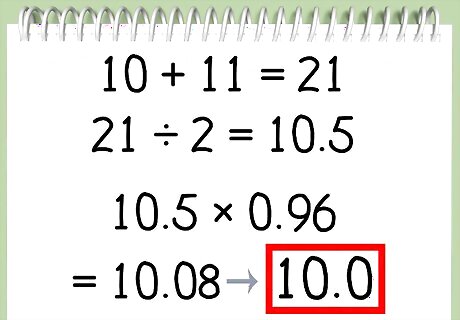
Calculate your Handicap Index. The formula for your Handicap Index is the sum of your differentials divided by the number of differentials, multiplied by 0.96, or (Sum of Differentials / Number of Differentials) x 0.96. The figure of 0.96 in the equation represents the “bonus for excellence” that the UGSA has figured into the Handicap Index. Determine the number of differentials to be used. If you’re using 5-6 scores, use the lowest differential; if you have scores from 7-8 rounds, use the lowest two differentials; if you have scores from 9-10 rounds, use the lowest three differentials; and so on). You can use up to 20 scores (for which you would use the 10 lowest differentials). For more detail on how many differentials to use, see the UGSA Handicap Differentials Chart. For example, if you’re using 8 scores, you’ll be using the lowest two differentials. Let’s say your two lowest differentials are 10 and 11. To average them, add them together, and then divide the resulting number by 2. Then multiply the result by 0.96, and drop any digits beyond the tenths place. The equation would look like this: 10 + 11 = 21; 21 / 2 = 10.5; 10.5 x 0.96 = 10.08. Dropping the digit beyond the tenths place gives you a handicap index of 10.0 (remember not to round up).
Calculating Your Course Handicap
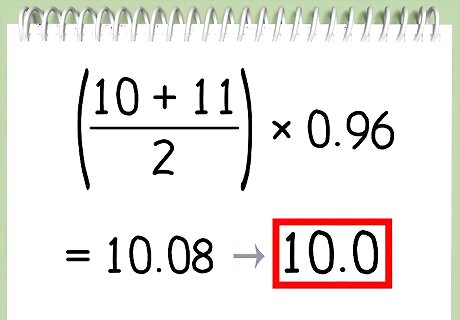
Calculate your Handicap Index. If you haven’t already done so, you’ll need to calculate your Handicap Index in order to determine your Course Handicap (see previous section). Your Course Handicap takes into account your ability and the course’s difficulty in order to show you your handicap for that particular course, or, in other words, how many strokes--based on your Handicap Index--you can deduct from your final score for this particular course.
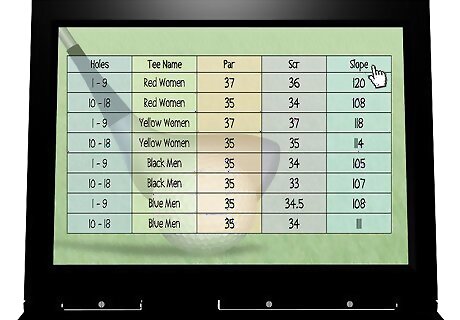
Find the Slope Rating of your course. Most golf courses make this information available to players at the club house. Look for the course’s Slope Rating on the course website or ask an employee at the course’s clubhouse.
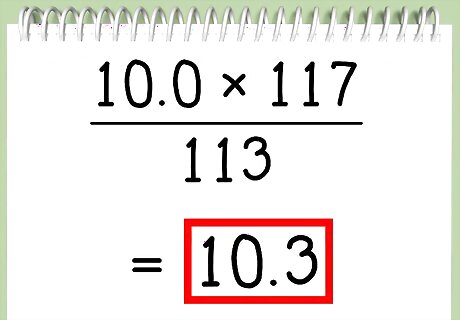
Calculate your Course Handicap. Once you have your Handicap Index and the course’s Slope Rating, you can total up your Course Handicap using the formula: (Handicap Index) x (Slope Rating) / 113. Round to the nearest whole number. You divide by 113 because it represents the Standard Slope Rating established by the UGSA. Many courses offer conversion charts that allow you to skip the formula altogether when looking up your Course Handicap. The UGSA also offers a comprehensive listing of Course Handicap conversion charts specific to the course you’ll be playing on. For example, if you have a handicap index of 10.0 and a slope rating of 117, you would use the following equation: (10.0 x 117) / 113, which results in a course handicap of 10.3.
Improving Your Handicap

Go to the range. The more practice you have with your strokes, the better your performance on the links will be. Make it a habit to frequent the range regularly and often. Use your practice at the range to perfect your stroke, which will translate into better form when it counts.

Check your equipment. Having ill-fitting or over-used equipment can have a noticeably negative impact on your game. Check that your equipment is still in good working order (no disintegrating grips, no worn-down grooves, etc.). If it isn’t, invest in replacements. Get your equipment properly fitted to you. Having equipment properly sized to your body can make a significant difference to the quality of your game.

Challenge yourself. Challenging yourself will help keep your skills sharp and diversified. Play different courses. Don’t get stuck only playing at your home course--challenge yourself by playing on new and different courses that will help you practice a variety of skills. Play in less-than-ideal conditions. If it’s windy, rainy, or otherwise less-than-ideal outside, don’t stay home--instead, challenge yourself by playing in the more difficult conditions. Doing so will help you develop a broader, more diverse range of skills that you can then use to your advantage when playing in comparatively easier conditions.
















Comments
0 comment